Thingiverse

Modeling Topography and Erosion with 3D Printing by roberthemlich
by Thingiverse
Last crawled date: 3 years ago
"Modeling Topography and Erosion with 3D Printing" is a project that will demonstrate the effect of river erosion on the Grand Canyon. This model will act as a visual aid for studying geography and earth science.
The included 3D printable files will allow students to create a scale terrain model of this region and all the accessories needed to simulate a water source.
By using rigid plastic PLA to print the Grand Canyon and water soluble PVA to print a River Valley that fits within, water poured through the river will dissolve the PVA and gradually expose the canyon underneath. During the experiment, participants will observe natural formations that will appear and identify geographic terms to understand how and why these structures come to be.
Update #1 - 4/12/2018: I have uploaded an experimental two-part mold for the PVA river, in case you would like to cast the river insert out of a different material (or from liquid PVA). This is still in the very early testing phase, so please use at your own risk. The mold has four mounting holes for standard M3 (x12mm or longer) bolts.
Update #2 - 3/28/2019: Included in the files now is a text document which goes into the details of exactly how I made the Grand Canyon and PVA insert in Blender 2.78. If you are an advanced user and would like to try to make your own topographic model, be sure to check it out.
Update #3 - 6/27/2019: The source Blender 2.78 file used to make all the terrain model pieces is available in the files now. This includes the original geometry, the starter river shape, a blank PVA insert (before the river was booleaned), and boolean cubes which can be adjusted to make a new insert or deeper river. For people who don't want to manually program the color changes, there is a Grand Canyon model separated into 6 colors in the file too. In the Thing Files, the raw geometry of the starter river, an extruded starter river for booleans, and the blank PVA insert are uploaded for making custom molds for new erosion substrates.
Feel free to share any images, videos, tips, tricks, or suggestions from your experiment and experience with the project!
Awards, Accolades, and Mentions
Pinshape Create to Educate Lesson Plan Contest - 1st Place Winner
Pinshape Featured Design - December 1, 2017
Make Magazine Blog Article - December 18, 2017
Cults 3D Selection - December 2017
MatterHackers Minute - Create to Educate Design Challenge Review
https://pinshape.com/blog/announcing-create-educate-lesson-plan-contest-winners/https://pinshape.com/blog/pinshape-featured-designs-december-1st/https://makezine.com/2017/12/18/science-simulation-3d-printing/https://cults3d.com/en/creations/selectedhttps://www.youtube.com/watch?v=S_rikCwHumk
Timelapse video here (and embedded at the bottom of the page):https://www.youtube.com/watch?v=DhQ9V3SRjRw
Follow me on Instagram to see more of my cool stuff! :Dhttps://www.instagram.com/roberthemlich/
This lesson plan is written with an emphasis on the Common Core Science Standards for the state of Michigan. The guide follows classroom goals set by the "Science Course/Credit Requirements" document to engage student interest in STEM subjects.
http://www.michigan.gov/documents/mde/Science_CourseCredit_466083_7.pdf
The included 3D printable files will allow students to create a scale terrain model of this region and all the accessories needed to simulate a water source.
By using rigid plastic PLA to print the Grand Canyon and water soluble PVA to print a River Valley that fits within, water poured through the river will dissolve the PVA and gradually expose the canyon underneath. During the experiment, participants will observe natural formations that will appear and identify geographic terms to understand how and why these structures come to be.
Update #1 - 4/12/2018: I have uploaded an experimental two-part mold for the PVA river, in case you would like to cast the river insert out of a different material (or from liquid PVA). This is still in the very early testing phase, so please use at your own risk. The mold has four mounting holes for standard M3 (x12mm or longer) bolts.
Update #2 - 3/28/2019: Included in the files now is a text document which goes into the details of exactly how I made the Grand Canyon and PVA insert in Blender 2.78. If you are an advanced user and would like to try to make your own topographic model, be sure to check it out.
Update #3 - 6/27/2019: The source Blender 2.78 file used to make all the terrain model pieces is available in the files now. This includes the original geometry, the starter river shape, a blank PVA insert (before the river was booleaned), and boolean cubes which can be adjusted to make a new insert or deeper river. For people who don't want to manually program the color changes, there is a Grand Canyon model separated into 6 colors in the file too. In the Thing Files, the raw geometry of the starter river, an extruded starter river for booleans, and the blank PVA insert are uploaded for making custom molds for new erosion substrates.
Feel free to share any images, videos, tips, tricks, or suggestions from your experiment and experience with the project!
Awards, Accolades, and Mentions
Pinshape Create to Educate Lesson Plan Contest - 1st Place Winner
Pinshape Featured Design - December 1, 2017
Make Magazine Blog Article - December 18, 2017
Cults 3D Selection - December 2017
MatterHackers Minute - Create to Educate Design Challenge Review
https://pinshape.com/blog/announcing-create-educate-lesson-plan-contest-winners/https://pinshape.com/blog/pinshape-featured-designs-december-1st/https://makezine.com/2017/12/18/science-simulation-3d-printing/https://cults3d.com/en/creations/selectedhttps://www.youtube.com/watch?v=S_rikCwHumk
Timelapse video here (and embedded at the bottom of the page):https://www.youtube.com/watch?v=DhQ9V3SRjRw
Follow me on Instagram to see more of my cool stuff! :Dhttps://www.instagram.com/roberthemlich/
This lesson plan is written with an emphasis on the Common Core Science Standards for the state of Michigan. The guide follows classroom goals set by the "Science Course/Credit Requirements" document to engage student interest in STEM subjects.
http://www.michigan.gov/documents/mde/Science_CourseCredit_466083_7.pdf
Similar models
cults
free

Modeling Topography and Erosion with 3D Printing
...youtube.com/watch?v=dhq9v3srjrw
follow me on instagram to see more of my cool stuff! :d
https://www.instagram.com/roberthemlich/
thingiverse
free

Educational Automotive Alternator by chriswh86
... featuring the alternator project on 3dprint.com - december 8, 2017 (https://3dprint.com/196533/chris-halliday-automotive-parts/)
3dwarehouse
free

Rageh Grand Canyon
...rageh grand canyon
3dwarehouse
rageh grand canyon topography
thingiverse
free

Grand Canyon HW assignment by ThomasLlewellyn
...grand canyon hw assignment by thomasllewellyn
thingiverse
this was a assignment for my 3d printing class about topography
3dwarehouse
free

wall in grand canyon
...wall in grand canyon
3dwarehouse
raised wall following topography
thingiverse
free

BMO - Adventure Time! by ChaosCoreTech
...ed. i printed it on my robo 3d r1 with hatchbox white pla.
print settings:
layer height: 0.3mm
infill: 20%
supports: no
raft: no
cg_trader
$10

Grand Canyon
...e terrain desert terrain desert landscape environment geology nature rock sand ground river mountains desert environment exterior
cg_trader
$3

Grand Canyon
...ns valley erosion river water mountain exterior stone landscape desert terrain rock environment geology desert terrain background
cults
free

BMO - Adventure Time!
...ed. i printed it on my robo 3d r1 with hatchbox white pla.
print settings:
layer height: 0.3mm
infill: 20%
supports: no
raft: no
thingiverse
free

coat hook
... print it on the side for easy printing with little support.
enjoy :)
check out my designs on pinshape.com http://bit.ly/pinshape
Erosion
3d_export
$15

Volcanoes 3D Model
...3d model 3dexport volcano volcanoes terrain landscape scene scenery erosion landslide terrains topology eruption smoke bijanstudio volcanoes 3d model...
3d_export
$22

3d mountain 10
...3d mountain 10 3dexport stone rock boulders craggy colored erosion natural wildlife 3d scan photorealistic mountain game ready boulder...
3d_export
$12

3d mountain
...3d mountain 3dexport stone rock boulders craggy colored erosion natural wildlife 3d scan photorealistic mountain game ready boulder...
3d_export
$13

Scenic road for Vue 3D Model
...model 3dexport landscape sea terrain water beach clif desert erosion scene scenary road travel scenic road for vue 3d...
3d_export
$29

3d Terrain Eroded 3D Model
...terrain landscape environment nature 3d model land elevation soil erosion surface terrestrial rocks uneven 3d terrain eroded 3d model...
3d_export
$29

3d Terrain IceBerg 3D Model
...terrain landscape environment nature 3d model land elevation soil erosion surface terrestrial rocks uneven ice 3d terrain iceberg 3d...
3d_ocean
$9

Terrain_03_2
...snow terrain archive includes: - textures: – color, normal, erosion maps are 8192×8192 pixels – the textures are located...
3d_export
$12

Ancient brick wall texture 3D Model
...wall roman empire bricks mortar fantasy rome erode eroded erosion stone displacement texture hole medieval architecture ancient brick wall...
3d_export
$19

FAIRY CHIMNEYS-HOODOO 3D MODEL-3D PRINTABLE
...of the hoodoo its strength to resist erosion.with time, erosion of the soft layer causes the cap to be...
sketchfab
$4

Stone Altars - Time Erosion
...ured by: mojackal
collection link: https://skfb.ly/oc6zk
- stone altars - time erosion - buy royalty free 3d model by mojackal
Topography
3d_export
$18

song dynasty-topography-pier
...song dynasty-topography-pier
3dexport
song dynasty-topography-pier<br>3ds max 2015
turbosquid
$125

istanbul 3d topography
... available on turbo squid, the world's leading provider of digital 3d models for visualization, films, television, and games.
3d_export
$18

topography-seabed-coral 36
...d-coral 36
3dexport
topography-seabed-coral 36<br>max 2015 v-ray 3 max 2015<br>textures<br>all files in zip...
3d_export
$18

topography-seabed-pillar 75
...pillar 75
3dexport
topography-seabed-pillar 75<br>max 2015 v-ray 3 max 2015<br>textures<br>all files in zip...
3d_export
$18

submarine topography-cave 23
...-cave 23
3dexport
submarine topography-cave 23<br>max 2015 v-ray 3 max 2015<br>textures<br>all files in zip...
3d_export
$18

jiuyou sea area-topography
...topography
3dexport
jiuyou sea area-topography<br>max 2015 v-ray 3 max 2015<br>textures<br>all files in zip...
3d_export
$18

topography-embankment-river dam 32
...32
3dexport
topography-embankment-river dam 32<br>max 2015 v-ray 3 max 2015<br>textures<br>all files in zip...
3d_export
$18

topography-embankment-river dam 33
...33
3dexport
topography-embankment-river dam 33<br>max 2015 v-ray 3 max 2015<br>textures<br>all files in zip...
3d_export
$18

topography-embankment-river dam 38
...38
3dexport
topography-embankment-river dam 38<br>max 2015 v-ray 3 max 2015<br>textures<br>all files in zip...
3d_export
$18

topography-seabed-coral-channel 32
...32
3dexport
topography-seabed-coral-channel 32<br>max 2015 v-ray 3 max 2015<br>textures<br>all files in zip...
Printing
design_connected
$27
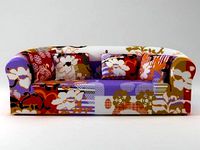
...print
designconnected
moroso print computer generated 3d model. designed by wanders, marcel.
3ddd
free

Eichholtz Prints
...- eichholtz print central station i
13 - eichholtz print central station ii
14 - eichholtz print marisa
15 - eichholtz print tish
3ddd
$1
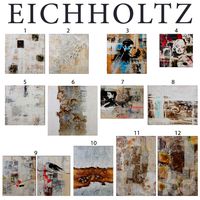
Eichholtz Prints
...print abstract - set of 2
10 - eichholtz print orange abstract
11 - eichholtz print buddha right
12 - eichholtz print buddha left
turbosquid
$1

... available on turbo squid, the world's leading provider of digital 3d models for visualization, films, television, and games.
3ddd
free
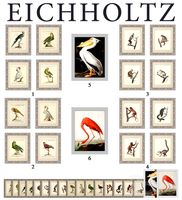
Eichholtz Prints
...of 4
2 - print dunbar 2 set of 4
3 - print guadeloupe 1 set of 4
4 - print guadeloupe 2 set of 4
5 - print giles
6 - print trett
3ddd
$1

Eichholtz Prints
...nt tutti frutti
3 - eichholtz prints watson - set of 2
4 - eichholtz prints antique nautilus - set of 2
5 - eichholtz print tiara
3d_export
$5
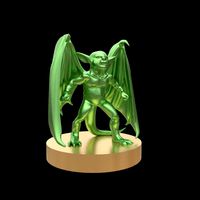
Monster for printing
...monster for printing
3dexport
monster 3d model printing
3ddd
free
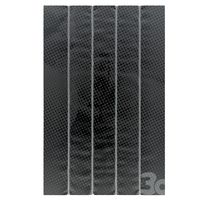
printed rug
...printed rug
3ddd
ковер
very creative printed rug
3ddd
free
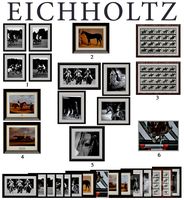
Eichholtz Prints
...иал: бумага
габариты (вхш): 72 x 62 см
описание: print sweetmeat - постер в деревянной раме.
3 - prints varsity set of 2
арти
3ddd
free

Art Print Posters
...art print posters
3ddd
прованс
art print posters by patrician prints
